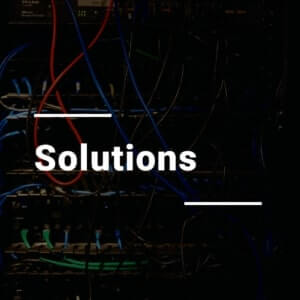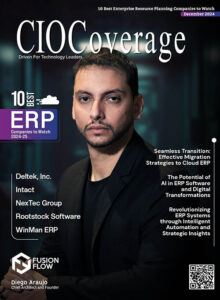 The value-based care initiative ushered a fundamental push for healthcare providers to satisfy requirements for meaningful use incentives and HIT vendors’ to offer software focused on the interoperability of health information. At that point in time, pitfalls around the actual usability of EHRs were tolerated. Still, years later, a fragmented EHR and HIT system has the majority focused on the exchange of information rather than data integrity at the source. This is a major cause for concern as the objective of delivering high quality care is seen as a secondary, if not tertiary, goal.
The value-based care initiative ushered a fundamental push for healthcare providers to satisfy requirements for meaningful use incentives and HIT vendors’ to offer software focused on the interoperability of health information. At that point in time, pitfalls around the actual usability of EHRs were tolerated. Still, years later, a fragmented EHR and HIT system has the majority focused on the exchange of information rather than data integrity at the source. This is a major cause for concern as the objective of delivering high quality care is seen as a secondary, if not tertiary, goal.
As electronic health record adoption rates increase, so have instances of medical malpractice relating to imperfections within EHR systems. This impedes the industry’s primary goal of enhancing patient care and accelerating positive outcomes. Although we can all agree an electronic system is enriching the healthcare industry, it leaves healthcare providers exposed to a completely new set of complications.
When it comes to addressing these issues, practitioners and venders alike publicize grievances to little avail. Clinicians who endure inconsistencies between various systems, a lack of operational flexibility, and healthcare information silos criticize software vendors for creating applications that are not directly in line with their workflows. While conversely, EHR vendors rebuke healthcare organizations for lack of employee training and aptitude to learn, improper system implementation, loosely defined IT & documentation policies, a perpetuation of hybrid (electronic and paper) medical records, and remark how most have an unrealistic expectation of functionality.
While software vendors certainly need to fix some issues, healthcare organizations and practices have an obligation as well. From an IT perspective this leads to a two prong approach to resolving the dissonance between the two; increased usability in EHR software with custom implementations by practices and organizations.
“Usability is one of the more important aspects in EHR development,” stated Pawan Sharma, Director of Operations for Healthcare at Chetu, Inc. “Although interoperability and functionality play a pivotal role when developing an electronic health record application, tasks that are cumbersome and complex can ultimately have negative implications.”
Usability is described as a user-centric software concept rather than focusing on the core system requirements. This approach to software development and design assimilates the consideration of the end-user from the start of a project. When dealing with EHRs, usability is an important aspect to take into account as it measures the viability of a product from a task perspective. Incongruent interfaces, poor reliability and functionality, plus lack of customization for specialty practices will hinder an organizations ability to maintain data integrity.
Doctors have highly criticized the use of popular EMRs for their obvious shortcomings in usability and question their viability in actually contributing something meaningful to the doctor-patient relationship. These supposed advancements bombard doctors with burdens such as time-consuming data entry, notification overload, interfaces that do not align with workflows and overall lack of efficiency.
EHR and HIT Software vendors must recognize the need in the market for software that is usable. Going above and beyond the system requirement of interoperability of information, they must deliver software that has a flawless User Interface (UI) and User Experience (UX). Enlisting the help of HIT specialists who have experience in all facets of healthcare and technology will ensure an intuitive and navigable software interface that allows doctors to maintain the integrity of their data by reducing arduous tasks. This provides the best experience to doctors, and in turn, to the patient.
“Custom Implementations are a beneficial way for healthcare organizations to better leverage EHR capabilities,” furthers Mr. Sharma. “To ensure that patients receive the best care possible it is paramount to certify all software systems including medical devices, analytics platforms, clinical decision support software, telemedicine / mHealth applications, practice management suites, plus federal and state registries are integrated together and implemented in a way that does not disrupt crucial financial and clinical workflows.”
Similar to treating most diseases, it is best to be proactive rather than reactive. Healthcare organizations need to be cognizant of the fact that out-of-the-box software solutions were not designed with their individual business in mind. That is why it is best to implement custom solutions to fulfil specific business needs, instead of waiting to tailor the system as problems arise. It is important to address each particular need in order to implement a system that is beneficial to both the healthcare provider and the patient.
Routines and workflows as they relate to practice management including RCM billing and claims, appointment scheduling, and patient engagement need to be focal points of any system. Workflows must be intuitive and seamless so new processes do not need to be defined to accommodate a new EHR system. Poorly implemented or even subtle changes can have monumental effects on productivity and inhibit patient care.
With the many different specialties of medicine, one-size-fits-all EHR System may lack the ability to capture precious data with ease. To accommodate the specialty areas of medicine and help increase patient outcomes, custom templates and workflows for capturing essential data for demographics, vitals, chief complaint charting, evaluation and management must be developed and integrated into the EHR system. The appropriate routes of data capture will reduce the amount of data entry by the clinician and increase the data integrity to ensure all essential information is captured.
One of the many benefits that EHRs provide is the ability to quickly and seamlessly capture and transmit data across a patient’s entire continuum of care. How the data is translated between the different environments is key to improving patient outcomes. When implementing EHR systems it will be important to recognize differences in disparate systems and anticipate how the ebb and flow of data effect a practice. The interoperability of the system needs to be taken into account to ensure the integrity of information into, and out of a practice.
Practices that operate multiple locations need to implement a system that keeps cohesion throughout sites. To accommodate multi-site locations, a custom EMR deployment will ensure a cohesive environment for patients who may visit more than one location.
The primary reason for dissonance between end-users and their EHR technology is software engineered and implemented by developers with a limited knowledge of its intended use. This is why it is important for software vendors and healthcare providers to look for back-end software partners with Healthcare IT experience that includes knowledge of and experience with federal regulations like ARRA, Meaningful Use, Accountable Care Act, etc. Developers must also be proficient with HIT Standards such as Physician Quality Reporting System (PQRS), Health Level 7 (HL7), Electronic Data Interchange (EDI), Continuity of Care (CCD/CCR), etc. Furthermore, it is imperative that a software partner have an understanding of clinical and financial workflows. Visit Chetu to see how their healthcare software solutions can increase the usability of software for EHR vendors and implement custom solutions for healthcare organizations.
















